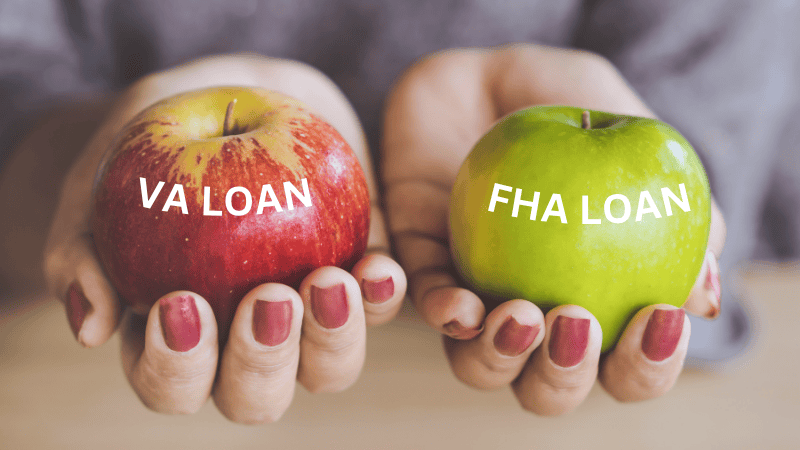Last updated: September 2025
Quick Answer
If you’re buying a home with a VA loan for the first time, follow this step-by-step checklist: confirm your eligibility, check your credit, get preapproved, gather required documents, budget for all costs, and work with a VA-savvy lender and real estate agent.
Why first-time VA buyers need a step-by-step plan
Buying your first home is exciting—but it also comes with paperwork, deadlines, and financial decisions. If you’re eligible for a VA loan, you already have a major advantage: $0 down payment, no PMI, and lower interest rates. Still, navigating the process successfully means preparing early.
This guide outlines every step you need to take—before and during your home search—to make the most of your VA loan benefits in 2025.
Step 1: Confirm your VA loan eligibility and request your COE
To use a VA loan, you must meet military service requirements. These vary based on your branch, time served, and discharge status. In general, you may be eligible if you are:
- An active-duty service member with 90 days of continuous service
- A veteran with 90+ days during wartime or 181+ days during peacetime
- A National Guard or Reserve member with 6 years of service
- The unmarried surviving spouse of a service member who died in the line of duty
How to confirm eligibility:
- Request your Certificate of Eligibility (COE) through the VA, your lender, or with a DD-214 form (for veterans)
- Active-duty members will need a Statement of Service signed by a commanding officer
Your COE verifies your entitlement and lets your lender know you qualify for the VA loan program.
Step 2: Check your credit and financial profile for VA loan approval
While the VA doesn’t set a minimum credit score, lenders typically require a credit score of 620 or higher. That said, lower scores may be approved with compensating factors, such as strong income or cash reserves.
Here’s what to check:
- Your credit report from all three bureaus (Equifax, Experian, TransUnion)
- Your FICO score—most VA lenders use mortgage-specific scoring
- Your debt-to-income (DTI) ratio, ideally below 41%
- Your residual income, based on family size and region (required by VA)
You can improve your chances by:
- Paying down high credit card balances
- Avoiding new loans or credit inquiries
- Keeping steady employment and avoiding large financial changes
Step 3: Get preapproved by a VA-savvy lender to strengthen your offer
Preapproval is more than just a soft estimate—it’s a full review of your finances that lets sellers know you’re serious and capable of buying.
What a VA preapproval includes:
- Credit check
- Verification of income (W-2s, LES, tax returns)
- Verification of assets (bank statements)
- Review of your COE
- Preapproval letter with maximum loan amount
Choose a lender with experience in VA loans—they’ll understand how to:
- Calculate your residual income
- Navigate VA appraisal and documentation rules
- Guide you through closing without delays
Step 4: Gather required VA loan documents to avoid delays
Before and during the underwriting process, your lender will request various documents. Gather them early to prevent last-minute delays.
Here’s a basic VA loan document checklist:
- Certificate of Eligibility (COE)
- Proof of service (DD-214 or Statement of Service)
- Recent pay stubs (typically last 30 days)
- Two years of W-2s or tax returns
- Two months of bank statements
- Government-issued ID
- Proof of additional income (disability, retirement, side jobs)
For self-employed borrowers:
- Two years of business tax returns
- Year-to-date P&L statements
Having these ready up front can help you close faster and with fewer surprises.
Step 5: Budget for total VA loan homebuying costs
VA loans offer $0 down, but that doesn’t mean you’ll close with zero out-of-pocket costs. Budgeting properly ensures you’re ready when it counts.
Costs to plan for:
- Earnest money deposit: Typically 1–3% of the purchase price
- Home inspection: Optional but highly recommended ($300–$600)
- VA appraisal fee: Varies by state ($500–$800 average)
- Closing costs: 3–5% of loan amount (title fees, taxes, lender fees)
- VA funding fee: 0.5%–3.3%, waived if you have a disability rating
Your lender may offer:
- Seller concessions (up to 4%)
- Lender credits to offset some costs
- Options to roll fees into the loan if allowed
Create a realistic budget, and ask your lender for a Loan Estimate (LE) early in the process.
Step 6: Work with a VA-experienced real estate agent to find eligible homes
Not all agents understand the nuances of VA financing.
A VA-savvy agent will help you:
- Target VA-eligible properties
- Understand occupancy and appraisal rules
- Structure offers that are attractive to sellers
- Avoid homes that may not meet VA minimum property requirements (MPRs)
Ask your lender or local veteran support network for agent recommendations, or search for those with VA or military relocation certifications.
Step 7: Understand VA loan limits and occupancy rules in 2025
With full entitlement, VA loans have no official loan limits in 2025. This means you can:
- Buy above conforming limits
- Skip the down payment
- Qualify based on your lender’s approval and your entitlement
However, you must meet:
- Occupancy requirement (move in within 60 days and intend to stay 12 months)
- Primary residence use (no vacation or investment-only properties)
Planning to house hack? VA loans allow 1–4 unit properties if you live in one unit.
FAQ: First-time VA buyer checklist
Most VA lenders require a score of 620 or higher, but some will go lower with strong income and other compensating factors.
You’ll need your COE, proof of service, pay stubs, W-2s or tax returns, and bank statements. Your lender will provide you with a comprehensive list.
While the down payment is $0, you’ll still need funds for closing costs, inspections, and earnest money. Plan for 3–5% of the total purchase price.
Your lender can request it for you, or you can apply online through VA.gov or by submitting VA Form 26-1880.
Yes, VA loans allow properties with 1–4 units if you live in one unit as your primary residence.
Start your VA home buying journey the right way
As a first-time VA buyer, preparation is your best advantage. By confirming eligibility, checking your credit, getting preapproved, and working with experienced professionals, you’ll be ready to buy confidently—and close faster.



